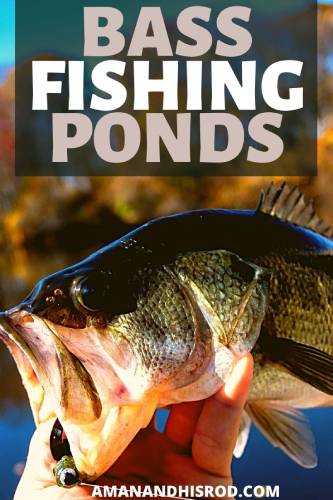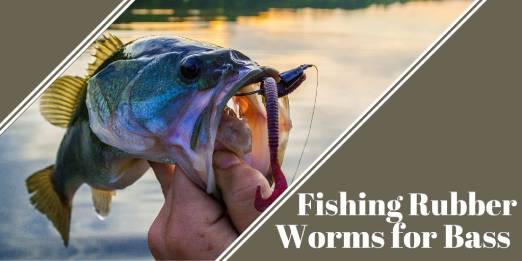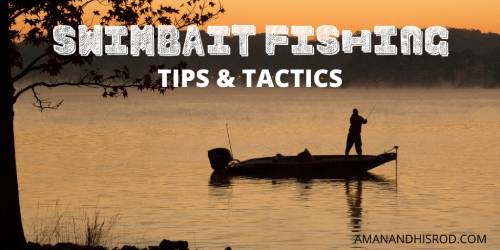
Bass Fishing in Ponds has produces some of the biggest and best fish of my life. I’ve set my personal best a few times fishing ponds near me.
Pond fishing gives anglers a distinct advantage over fishing larger lakes.
Ponds have a tendency to have less pressure from fisherman than lakes.
This can be because of private property or maybe it’s off the beaten path. Either way, bass fishing in ponds can be down right crazy.
This website is reader supported. Any purchases you make through links on this site earn us a commission at no additional cost to you. Thank you for your support!
Before we get into the article more, I would love for you to leave a comment at the bottom of this post. Let me know your favorite lure, tip, or piece of gear when night fishing for bass.
Why Should You Bass Fish in Ponds?
We already talked about the pressure of a pond and how it would have less angler presenting their best lures to your fish. But there are some other distinct advantages of pond fishing for bass.
Many ponds have ample vegetation and tree cover to house fish. Bass do especially well in stagnant or warmer water, they thrive actually.
The cover allows for small bass fry to hide or escape more easily. Meanwhile, it provides great ambush points for larger bass to eat those said fry as well.
Another reason why bass thrive in ponds is because of water temperature. Water temperature plays a huge part in when bass spawn.

The warmer the water the faster the eggs hatch. While bass typically only spawn once a year, if conditions are right its not unheard of for a bass to spawn twice.
We did talk about food supply just a moment ago. Another fish that grow very well in ponds is bluegill and sunfish.
Do you know what eats bluegills and sunfish? That’s right, bass eat them by the mouth full.
Mixing these factors in with a good water supply and ecosystem, bass can grow rapidly and for a long time.
Lets cover a few tips to get some bass to bite next time your out on the local pond.
How to Fish a Bass Pond
Unlocking the key to catching bass in ponds is similar to that of catching bass in lakes. There are your obvious area that you want to target.
- DOCKS
- POINTS
- TREES
- ROCK PILES
These are universal to most fisherman, or they should be at least. There are some areas in bass ponds that may be a little less obvious thought that can provide some good results.
When Fishing ponds for bass it will be the slightest little subtlety that may indicate where a bass is located.
Look for a small hole in the cat tails or lily pads. When fishing thick vegetation in ponds these areas will be an easy spot for bass to come and hit a jig, senko, worm, or frog.
Another great place to target bass in ponds is around aerators. If your pond is well maintained it should have some form of this in it.
These areas that have constant moving and oxygenated water. Bass will feed on other fish in these areas.
One more place that I have had great success catching pond bass is in the wide open.
Sometimes ponds have so much vegetation that the best place to catch fish is where the vegetation is not.
Some open water may be just what the doctor ordered for you to catch a bass of a lifetime.
How to Catch Pond Bass
Lets get into the reason you came here to read this article.
How do I catch bass in ponds?
My answer of what bait I use will not surprise you. There are some subtle tricks to catching bass in ponds though and I will go over those in this section.
Rubber Worm Fishing in Ponds

This is my hands down favorite way to catch bass in ponds. I have caught 9 pound bass on rubber worms before, so they can catch the biggens.
You can not fish a rubber worm in ponds the same way that you fish it in lakes.
You will undoubtedly bring in clumps of pond moss every time. Instead try this for better results.
1. Get a rubber worm in the 4-6 inch length range. I find that these will catch all sizes of bass in ponds so there is no need to go big here (nothing wrong with big worms though).
2. Pull out a size 2 EWG hook and Texas rig your rubber worm. You can read How to Fish the Texas Rig here if you want more details. No weight is needed or wanted here.
3. Now that you have your worm rigged properly for pond fishing, lets get a look at the pond and figure out where to fish. Bass can be incredibly shallow in ponds. They can hold in just inches of water.
4. Start by standing back from the bank about 10-15 feet. I want you first cast to be shorter than normal. Your worm should only be in a foot or two of water. We do this to eliminate the area of water that may be housing bass before we walk right up to them and they spook.
5. From here you next couple cast should be very selective. Remember those small tight openings we spoke of earlier? Hit every single one of those first. There may only be one or two that you can access freely form your standing position. We want to eliminate water with this step. If we catch a fish there than great, but if not, you gave the best odds of success to yourself without spooking fish arbitrarily.
6. After eliminating the water form highest priority to lowest, we will now fan cast if possible. This process will eliminate the rest of the water that we have not already fished. Because ponds tend to be so small, we want to make sure and fish every square inch of that puppy.
If your worm sinks to fast for you to effectively fish you pond, then you may want to try and wacky rig your worm.
Do you want more tips and tactics to catch bass fishing with rubber worms? The button below will take you to an article that will teach you just that!
Top Water Bass Fishing in Ponds
Fishing top water bass baits in ponds is the most fun way to catch fish. Your typical spro frog usually works the best when the top water bite is on.
Fishing this style of bait is also the easiest. Make sure and follow two main rules when fishing frogs in ponds.
- Use braided fishing line in order to pull bass through the thick vegetation.
- Make sure your top water bait is weedless unless fishing in open water. In that case use the top water bait of your choosing (mine is the Heddon Torpedo)
These two rules are the only one we must follow while pond fishing. But there are some other way to increase your chances.
Try using frogs with a concave face that will splash and displace more water than a typical frog. We can’t be afraid to make a little noise with our top water lures.
A safe alternative the the frog is your standard buzz bait. Fished quickly across the tops of lily pads or grass is ideal. This style bass lure does not work well in and around mossy surfaces. The blades tend to get gummed up and do not spin properly.
There is a whole article dedicated to top water bass fishing with frogs. Click the button below to go straight there. This article will go much deeper into frog fishing for bass.
Senko Fishing Bass Ponds
Fishing senkos in ponds in another great bait that can catch both numbers and lunkers.
Fishing these baits are similar to that of rubber worms, they’re essentially the same thing.

I like to use a medium weight spinning rod while fishing with senkos in bass ponds.
The ponds around my house are filled with moss and weeds so braid is an essential fishing line for me. Off he end of my braid I will run a 4 foot monofillament leader.
Along those same lines, Texas rigging my plastics is the way to go. I will only wacky rig senkos if I am fishing open water free of vegetation.
The only real difference between the senko and the worm for me is the size of the bait and the hook.
My favorite senko for ponds is the 4 inch Gary Yamamoto in watermelon black flake.
Even with this smaller sized rubber bait, I will often times use a size 1 EWG hook. The reason for this is because I’m throwing that senko straight into the depths of no return.
Casting these bad boys right into the middle of a tree or bush is the ticket.
Jig Fishing in Bass Ponds
If your fishing ponds that have hard bottom or sparse areas of hard bottom, then fishing jigs is for you. Many anglers on websites and forums will tell you that this is their number one way to catch bass in ponds.

I have found in my experiences that is not that easy to figure out. Here are a few tips for fishing jigs in ponds that I found to work well.
Tip #1 – Find areas that are right for a jig. These areas can include punching through lily pads, bed fishing, or hard rock bottoms.
Tip #2 – Use bigger jigs. I find that 1/2 ounce to 3/4 ounce jigs with the right jig trailer work better than finesse jigs.
Tip #3 – Use a larger jig trailer that is wide to add bulk. I don’t like to use longer trailers that add a lot of length to the jig. Instead I want to add girth.
Tip #4 – Bluegill colors seem to work the best in the bass ponds near me. This is because I have such a high population of bluegill. My tip is to match the color of the food the bass are consuming.
You can also find more jig fishing tips and tactics by clicking the button below. That article will cover areas to target as well as the right gear to use.
Conclusion – Bass Fishing in Ponds
If your not convinced just yet to go out and fish a bass pond near you, then maybe this video will motivate you some.
If this article taught you something, chances are, you know someone else who would love to read it as well. Find a social icon on this page and click your favorite one so you can tag them.
It time to get out there are try your luck bass fishing in ponds at a location near you.






